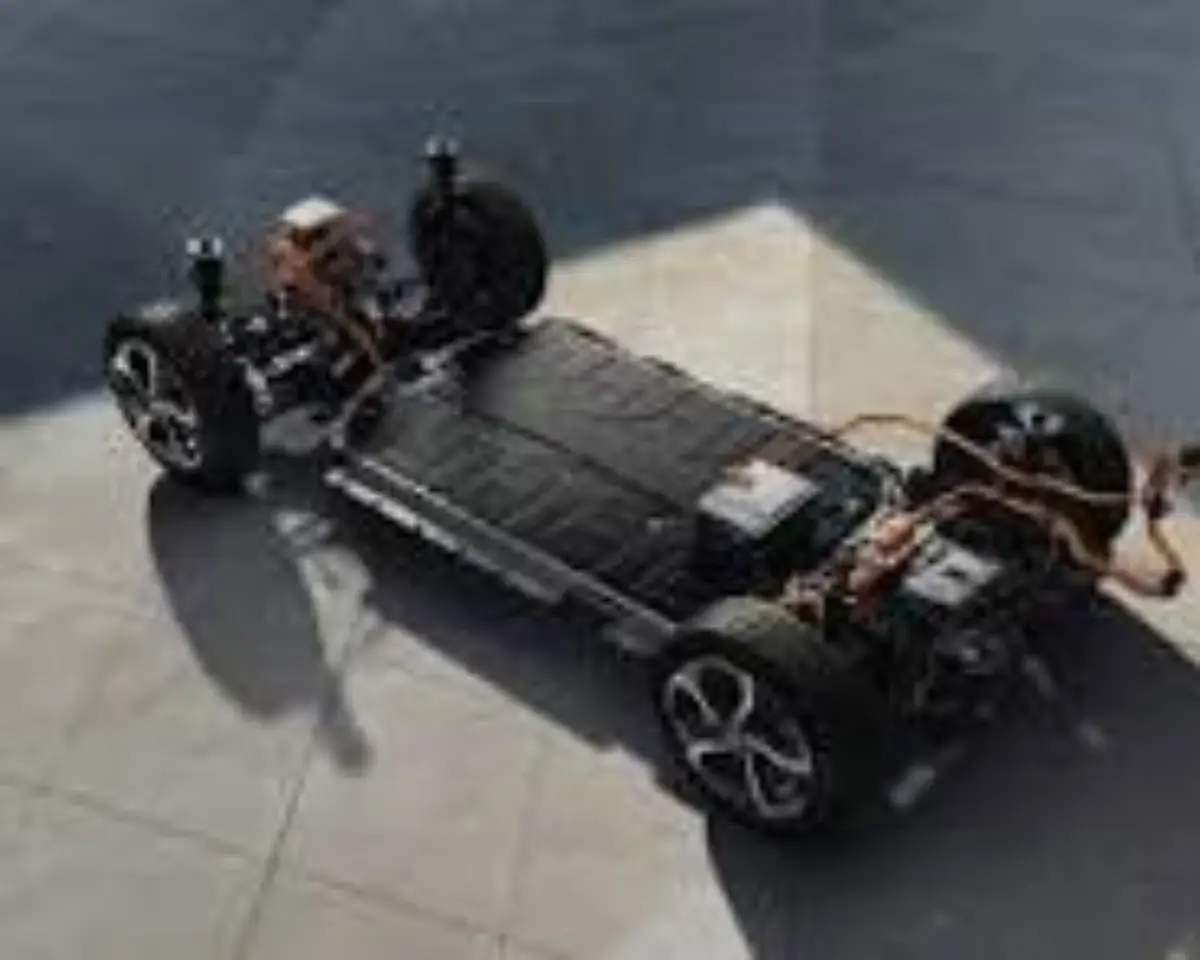Kia EV6: In 2019, Hyundai India introduced its electric Kona, but Kia EV6 India did not introduce its sibling model, the Niro EV. Instead, the EV6, its flagship model, is now competing in the EV race. Constructed using the company’s Electric Global Modular Platform (E-GMP), which is also shared by the Hyundai Ioniq 5, the EV6 is a fully electric vehicle that does not require an internal combustion engine. Kia’s EV6 thus demonstrates everything that the contemporary, everyday EV experience has to offer.
Upon observing the exterior, it is immediately apparent that this is a unique vehicle. Similar to the Jaguar i-Pace, which is also constructed on a significantly altered internal combustion engine platform, the Kia EV6 is svelte and positioned in between a hatchback and an SUV. The Korean takes things a step further, while the British sticks with a big grille and conventional head and taillights for familiarity’s sake.
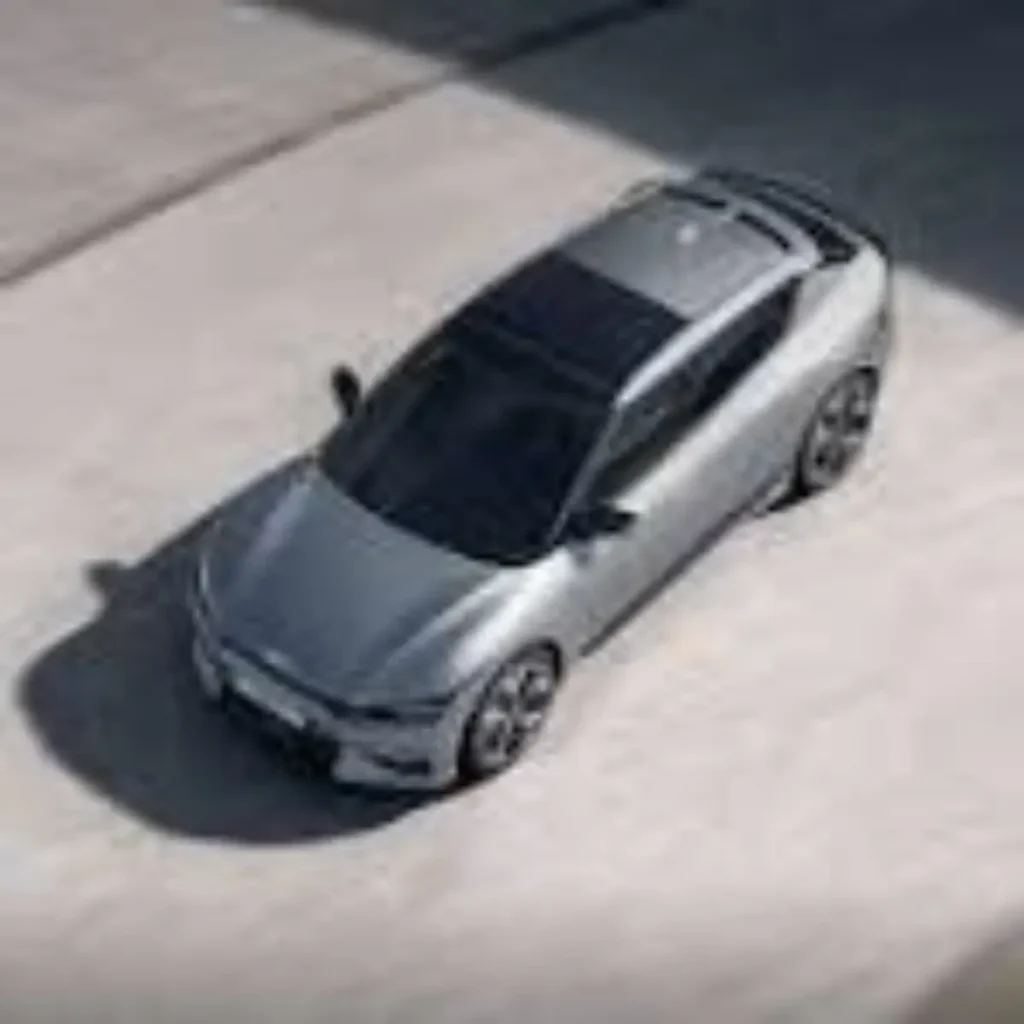
Kia EV6 exterior: Distinctive and Futuristic
The top and bottom of the headlamp units are designed to resemble a mirror image of each other, and they are encased in large DRLs. The entire unit has a very impressive, eye-catching appearance that is fairly realistic. A thin imitation grille sits beneath the clam shell bonnet, and the real air intake, which directs air for the HVAC system and battery cooling, is located at the bottom of the bumper.
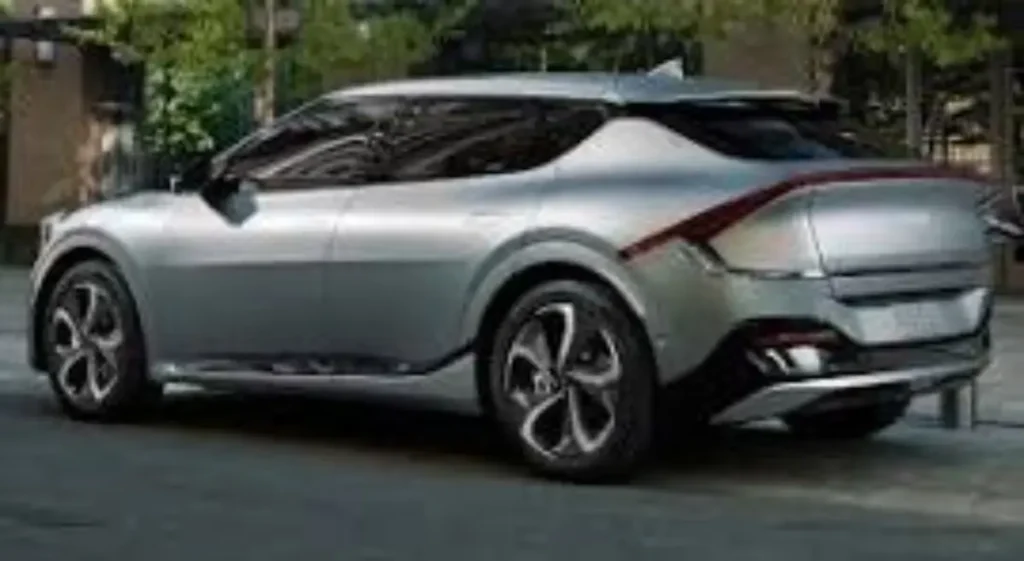
The Kia EV6 has a sleek and flowing profile from the side. At the top, the roofline merges into a spoiler that channels air above and below it and sprouts small wings on each side to improve aero efficiency. The 19-inch alloy wheels have a lot of surface area closed off for aerodynamic efficiency, which only lets you see a glimpse of the disc brakes and callipers behind. The EV6’s overall coefficient of drag is 0.28, which is less than the i-Pace’s 0.29.
The door handles are flush units, and a character line at the bottom crosses both doors before rising sharply to visually merge into the striking tail-light unit that runs the entire length of the back. The chrome trim below and the turn signal indicators above reflect the sleek, angular appearance of the unit. The entire effect is highly striking and unquestionably defines the EV6’s style.
Kia EV6 interior: Ample space
With the interior design and arrangement, Kia has chosen a more recognisable path than with the exterior. The interior of the Kia EV6 isn’t like that of other all-electric vehicles, such as the Tesla or even the Hyundai Ioniq 5, which is its sibling. Nonetheless, you get a very functional interior with a healthy dose of innovation in place of a radical layout, particularly when it comes to the storage spaces, which are much larger and located in unexpected places. Take the enormous cubby beneath the floating centre console, which can accommodate a sizable purse with ease. Due to the flat floor and the HVAC system being moved further forward because there is no engine, there is also ample storage beneath the centre armrest and a sizable glove box.
The Kia EV6 is a large device, measuring 1,890mm in width and 4,695mm in length. Its dimensions are the same as those of the XUV700. As expected, there is plenty of space inside because its 2,900mm wheelbase is larger than the Mahindra’s 2,750mm. It is comfortable to sit three abreast in the back, and the centre passenger won’t have to deal with a floor tunnel.

However, the dimensions don’t quite match up with how comfortable the seating position is. Because of the low roof and the elevated floor caused by the battery pack below, you must sit with your knees up to have adequate headroom. Additionally, there isn’t really enough space below the to allow you to put your feet forward.
However, the front seating is perfectly acceptable. There’s plenty of room to spread your legs, and the car’s clever party trick on both front seats is my personal favourite feature. At the push of a button, the base tilts upward and the seat back reclines significantly, putting you in a really comfortable and zero-gravity position. Parents or drivers who are waiting to pick up their kids from school will give their approval.
520 litres of boot space is likewise ample, but you’ll need to lift your bags in due to the high floor. The centre armrest features a ski-through flip down for longer and slimmer luggage, and you can also flip down the rear seats to increase the amount of space available for luggage using levers in the boot. In addition, the AWD model has a 20-liter front storage compartment, while the RWD versions have a larger 52-liter storage bay.
Kia EV6 equipment and features: Typically, Kia, Well equipped
The black and grey patterned dashboard and centre console complement the dark theme nicely, and the recycled materials used for the door pads and floor mats give a nod to sustainability. The Kia EV6 boasts ambient lighting in 64 colours for the floor, doors, and dash, all arranged in a stylish pattern. A 360-degree camera, ventilated seats, a wireless phone charger, USB ports at the front and rear, and a 3-pin AC power outlet below the rear seats to plug in a laptop are among the additional features. However, it should be noted that the sunroof is not panoramic as most people would anticipate. A seamless automotive experience is offered.
A 14-speaker Meridian system provides audio, and the Kia EV6 boasts a sleek curved display panel with two 12.3-inch screens. Although we were unable to experiment with the system, the initial touch response and layout were quite user-friendly. Additionally, Apple CarPlay and Android Auto are available, but only via a wired connection.
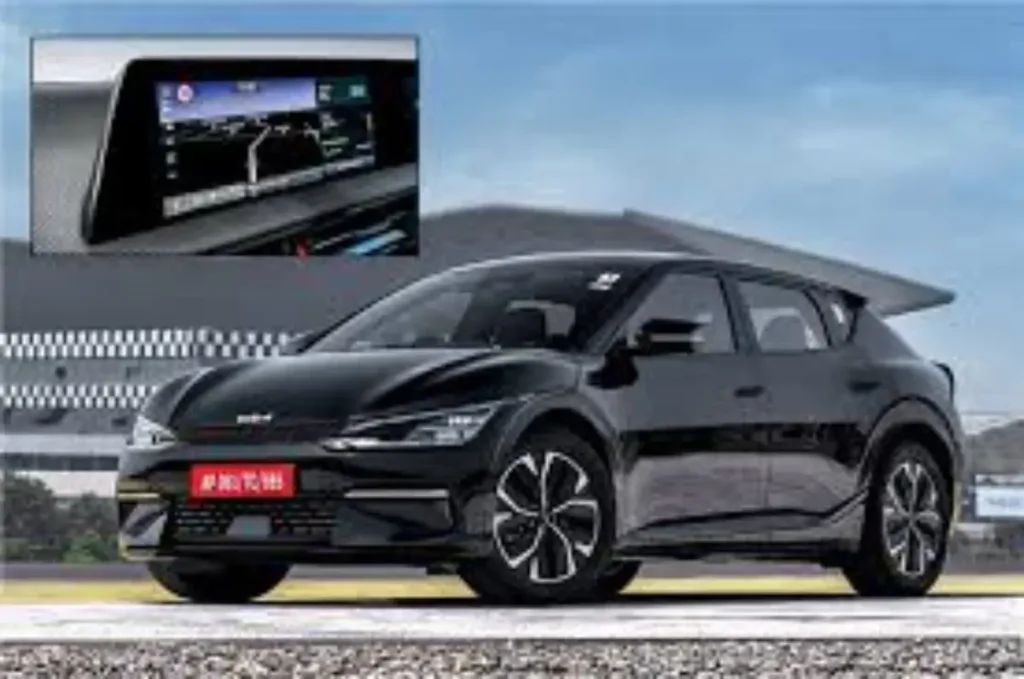
It’s interesting to note that you have to switch between the HVAC and infotainment modes in order to use either of the two systems, which share a touch panel. Although it’s novel, using it isn’t very safe or simple because you have to look away from the road to check the mode that the panel is in, toggle it if necessary, and then enter your command. There’s a good amount of information displayed on the driver’s head-up display (HUD), and the instruments screen can also be customised, but none of the options have a dial display.
Advanced driver assistance systems (ADAS), such as lane keep assist and emergency braking, are features of the EV6. It goes without saying that we were unable to test this out at the Formula One track. There are eight airbags total, two of which are side-impact bags designed to keep front occupants from colliding.
Kia EV6 battery, charging and motors: super-fast charging capability
Both all-wheel drive and rear-wheel drive versions of the Kia EV6 will be powered by a 77.4kWh lithium-ion battery setup. The EV6 can handle a very quick 350kW DC charge, which will take the battery from 10 to 80 percent full in just 18 minutes. Alternatively, it will take 73 minutes to reach the same level on a 50kW fast charger. The Kia EV6 is standard with a 22kW wall box charger for home charging; however, the charging schedule for this charger is still unknown.
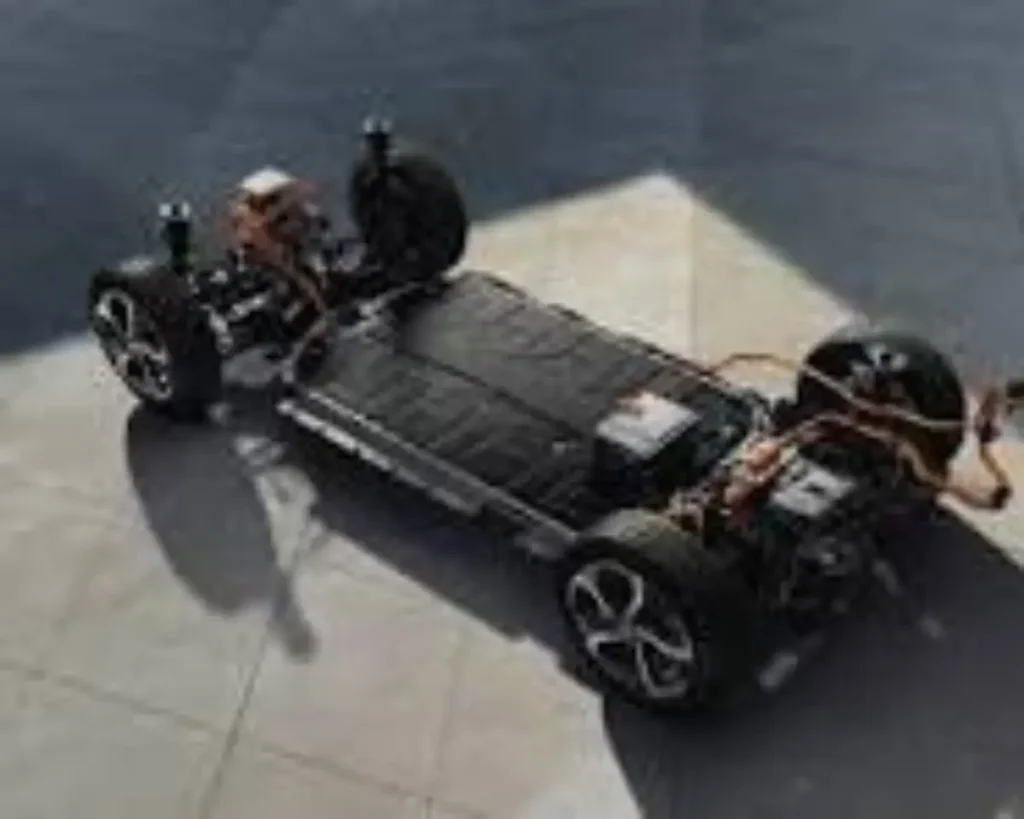
Although Kia hasn’t yet disclosed the ARAI-certified range, the international WLTP range is 528 kilometres. In the event of a power outage, the EV6 battery can run an external load, such as a refrigerator or some camping gear, thanks to its dedicated rear socket.
Kia EV6 performance: super quick, super strong
I’ve had the good fortune to drive a few cars on the Buddh F1 circuit, and all of the other vehicles—including some sports and muscle cars—feel completely out of place on the expansive, long track intended for F1 speeds, with the exception of the really fast supercars. However, the EV6 truly takes the surprise. It’s fast—the stated 0-100 kph time is 5.2 seconds—but what’s truly amazing is that the acceleration continues to be strong once you pass the 100 kph barrier.
EVs are usually blazing fast off the line, but the acceleration taper off quickly. The Kia EV6 accelerates strongly and linearly almost all the way to its 192 kph limited top speed, making it exceptionally impressive and quick at first. The build-up is so swift and intense that we reach our maximum speed, blasting through the long back straight from a standing start. Additionally, there are three drive modes: Eco, Normal, and Sport. It will be interesting to see how each of these performs in real use as they all have quite different feels.
Similar to its acceleration, the EV6’s handling is also very impressive. Its ability to manoeuvre around corners is astounding, and its near two-ton weight is belied by the way it changes direction and the excellent grip provided by its 235 section tyres. While you can push it to its limits on a track, body roll will be well contained in real-world corners and speeds. Although it has eager manners, I would have preferred more feel and feedback when steering, steering weight is also good.
There are two modes for the brakes as well: Normal and Sport, the latter of which offers a quicker bite. There are no issues with hard braking at all, and the system functions well. Additionally, the pedal feels smooth and natural when braking normally, and it’s difficult to tell when the wheel brakes are supplemental to the motor brakes. Like the majority of other EVs, the EV6 uses both conventional wheel brakes and motor braking, or regen, to stop the vehicle. However, in addition to having multiple regen modes, the EV6 also has an auto mode that allows the vehicle to adjust the level based on your driving style.
Kia EV6 Review on You-Tube
Also Read: Luxury Electrified: BMW i4 Review Zooms into India’s Auto Scene
Share to Others
